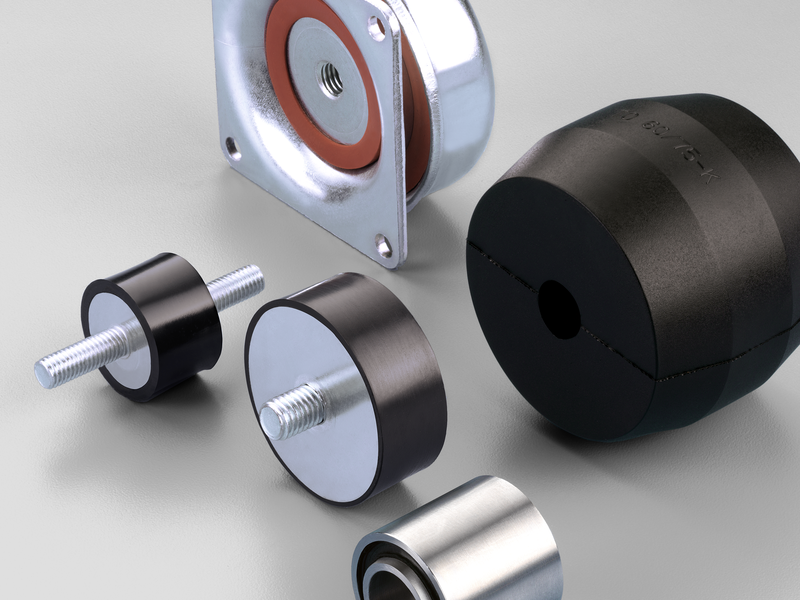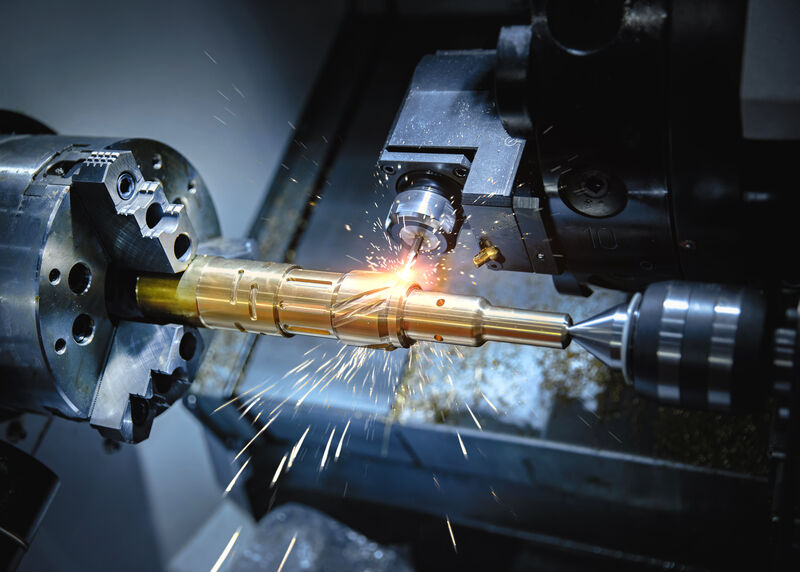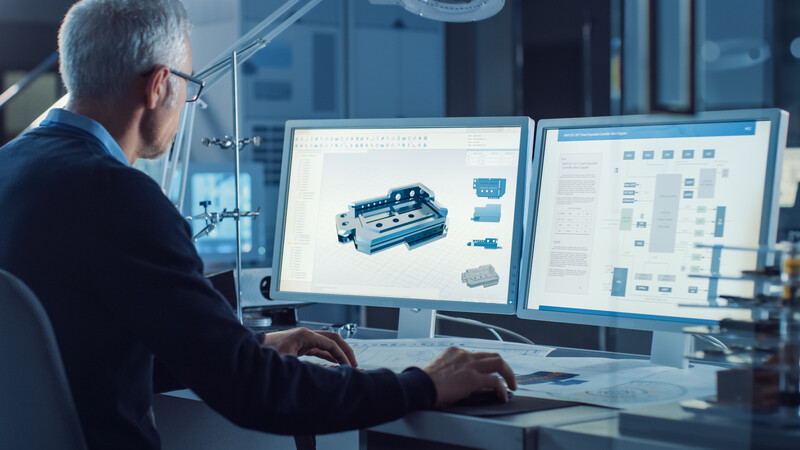Material combinations for demanding applications
Rubber-metal elements are essential for vibration damping and noise reduction. They are used in the automotive industry, mechanical engineering and construction to extend the service life of components and increase comfort. Jäger supplies clutch buffers, friction wheels, bearing elements, spring and damping elements, bushings, valve balls, piston bodies, stators, disk springs or shaft bearings, machine feet and other rubber buffers. Standardized or specially adapted to your requirements.

Quickfacts Rubber-Metal Elements
Application
Storage, decoupling, damping
Materials
NR, IIR but also e.g. EPDM, NBR, silicone, etc.
Hardness
soft (approx. 40-45 ±5 Shore A), medium (approx. 50-55 ±5 Shore A), hard (approx. 65 -70 ±5 Shore A)
Quality
Megi® & Schwingmetall®, but also alternative qualities
Standard rubber-metal buffer
Versions: A, B, C, D, E – further versions e.g. AT = “waisted”, AP = “parabolic”, K = “conical”, S = “with bead”
Further products
Ring buffers, conical bearings, rubber-metal rails, stop rails, U-rails, machine feet (height-adjustable, with or without breakaway protection), torsion bushings, rubber-metal hat elements, hydromounts, rubber-metal bushings, pot elements, etc.
Color
Standard: black, other colors on request
| Application | Storage, decoupling, damping |
| Materials | NR, IIR but also e.g. EPDM, NBR, silicone, etc. |
| Hardness | soft (approx. 40-45 ±5 Shore A), medium (approx. 50-55 ±5 Shore A), hard (approx. 65 -70 ±5 Shore A) |
| Quality | Megi® & Schwingmetall®, but also alternative qualities |
| Standard rubber-metal buffer | Versions: A, B, C, D, E - further versions e.g. AT = "waisted", AP = "parabolic", K = "conical", S = "with bead" |
| Further products | Ring buffers, conical bearings, rubber-metal rails, stop rails, U-rails, machine feet (height-adjustable, with or without breakaway protection), torsion bushings, rubber-metal hat elements, hydromounts, rubber-metal bushings, pot elements, etc. |
| Color | Standard: black, other colors on request |
Request a free sample now
Further details in the catalog
Request a free sample now
Our rubber-metal elements offer an innovative solution for technical systems with high sealing requirements. Where space is at a premium, conventional seals make assembly difficult. We vulcanize seals directly onto metal components in the injection moulding process, which creates a reliable, tool-bound connection. This offers significant advantages in sealing performance compared to freely applied seals.
For example:
Further products
Case Study

Blog

Blog

Blog
Jäger Gummi und Kunststoff GmbH
Lohweg 1
30559 Hannover
Tel. +49 511 – 53580
Fax +49 511 – 553394
info@jaeger-gk.de
Management:
Dr.-Ing. Andreas Jäger und
Julius Jäger
Hanover Register Court HRB 59798
DE 813 314 161